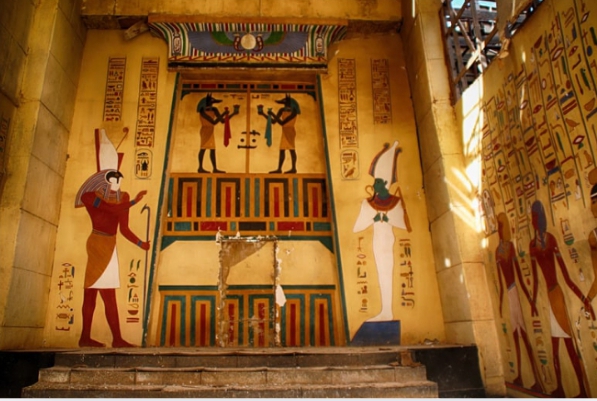The Timeless Beauty of Ancient Artz: A Deep Dive 2024
Introduction
Art has always been an essential part of human history, and one of the most intriguing aspects of art history is the ancient forms of artistic expression. “Ancient Artz” refers to the creative works produced by early civilizations, showcasing not only their aesthetic values but also their cultural, religious, and societal beliefs. In this article, we’ll explore the origins, characteristics, movements, and influence of Ancient Artz, providing a deep dive into the artistic practices that have shaped human culture for millennia.
What is Ancient Artz?
To understand Ancient Artz, we must first define what it encompasses. It refers to the visual and decorative arts produced by ancient civilizations, often characterized by their use of primitive tools and materials. These artworks include sculptures, pottery, frescoes, and carvings that reflect the values, beliefs, and daily life of the people who created them. The term “Artz” here can be seen as a blend of art and the ancient world, focusing on the earliest forms of human creativity.
Defining the Term
While the term “Ancient Artz” may not be widely used in academic circles, it’s a phrase that captures the essence of early human artistic endeavors. These artworks were often created for religious or ceremonial purposes, serving as a bridge between the human and the divine. The artistry was deeply intertwined with the culture, philosophy, and religion of the time, making it a fascinating subject for study.
The Historical Significance
Ancient Artz holds immense historical significance as it offers a window into the past. Through these artworks, we can understand the social structures, technological advancements, and spiritual beliefs of early civilizations. The art of ancient societies tells stories of their gods, kings, and everyday lives, offering insights that textbooks alone cannot provide.
The Origins of Ancient Artz
The beginnings of Ancient Artz date back to the earliest human civilizations. As soon as humans began to settle in one place and form communities, they started creating art. These early forms of expression were often tied to survival, religion, and the environment.
Early Beginnings and Influences
The earliest examples of art come from the Paleolithic period, with cave paintings and carvings found in places like Lascaux, France. These early artworks were simple yet powerful, depicting animals, human figures, and abstract symbols. As humans developed agriculture and formed larger settlements, their art evolved, influenced by their surroundings and the need to express religious and political ideologies.
Evolution Over Time
As civilizations like Mesopotamia, Egypt, and the Indus Valley flourished, their art became more sophisticated. The use of materials such as stone, clay, and metal allowed for the creation of intricate sculptures and structures. Over time, the art became more stylized, with specific techniques and forms developing in different regions, such as the iconic Egyptian hieroglyphs or the Greek classical sculptures.
Key Characteristics of Ancient Artz
Ancient Artz is defined by several key characteristics that distinguish it from modern art. These include the materials used, the symbolism embedded in the art, and the techniques employed by the artists.
Materials and Techniques Used
In ancient times, artists had limited access to materials, but they made the most of what they had. Stone, clay, wood, and metals were the primary materials used in sculptures and architecture. Techniques such as bas-relief (shallow carving) and fresco painting were commonly employed to depict scenes of daily life, religious rituals, and mythological stories.
Iconography and Symbolism
Ancient artworks are rich in symbolism, with each piece often telling a story or representing a belief system. For example, the Egyptians used specific symbols to represent gods and the afterlife, while the Greeks used iconography to depict their pantheon of gods. These symbols were not only decorative but served as a form of communication and spiritual expression.
Major Ancient Artz Movements
Throughout history, several ancient civilizations contributed to the development of art. Each civilization brought its own unique style and perspective, influencing the course of artistic evolution.
The Role of Ancient Civilizations
The role of ancient civilizations in the development of art cannot be overstated. From the ancient Egyptians, who created monumental works like the pyramids and the Sphinx, to the Greeks, who perfected the art of sculpture, these civilizations laid the foundation for much of what we recognize as classical art today.
Examples of Ancient Artz in Different Cultures
Mesopotamia: The art of Mesopotamia is best known for its ziggurats and detailed bas-reliefs. The Ishtar Gate in Babylon, with its stunning blue-glazed bricks, is a prime example of Mesopotamian artistry.
Egypt: Ancient Egyptian art is characterized by its highly stylized forms, with figures often depicted in a rigid, frontal stance. The Great Pyramids of Giza and the tomb paintings of the Valley of the Kings are some of the most iconic examples.
Greece: Greek art, especially during the Classical period, focused on idealized human forms, with sculptures like the Parthenon frieze and works by Phidias and Praxiteles setting the standard for later Western art.
The Influence of Ancient Artz on Modern Art
Ancient Artz has significantly shaped the development of contemporary art. Artists throughout history have drawn inspiration from the techniques, styles, and philosophies of ancient civilizations.
How Ancient Artz Shapes Contemporary Styles
The Renaissance period, for example, was deeply influenced by the art and philosophy of ancient Greece and Rome. Artists like Leonardo da Vinci and Michelangelo studied ancient sculptures and texts to inform their own work. Even today, elements of ancient art can be seen in the works of modern artists, who continue to explore themes of mythology, human form, and symbolism.
Artists Inspired by Ancient Artz
Many modern artists have looked to ancient art for inspiration. For example, sculptors like Auguste Rodin and painters like Pablo Picasso drew on the forms and techniques of ancient civilizations to inform their work. The influence of Ancient Artz is also evident in architecture, where classical columns and arches are still used in modern buildings.
Preserving Ancient Artz
Preserving ancient art is a critical task for historians, archaeologists, and conservationists. Many ancient artworks are at risk of being lost due to environmental factors, looting, and neglect.
Challenges in Conservation
One of the biggest challenges in preserving ancient art is the degradation of materials over time. Stone and clay sculptures can erode, while frescoes and paintings fade or peel away. The climate, pollution, and human activity also pose threats to the survival of ancient artworks.
Efforts to Protect Ancient Art
There are ongoing efforts to preserve and protect ancient art, including the use of advanced technologies like 3D scanning and digital restoration. Museums and cultural heritage organizations are also working to safeguard these treasures for future generations.
Conclusion
Ancient Artz is not merely a relic of the past; it stands as a tribute to human ingenuity and the drive to comprehend and convey the world around us. From the earliest cave paintings to the grand structures of ancient civilizations, these artworks provide invaluable insights into the past. They have played a key role in the evolution of art and continue to influence contemporary artists. Preserving these masterpieces is essential, as they represent not only the beauty of human creativity but also the rich cultural heritage of our ancestors.
FAQs
What is Ancient Artz? Ancient Artz refers to the visual and decorative arts produced by early civilizations, often with religious, cultural, or societal significance.
What materials were used in Ancient Artz? Artists in ancient times used materials like stone, clay, metal, and wood to create sculptures, paintings, and other forms of art.
How did Ancient Artz influence modern art? Ancient Artz inspired modern artists through its techniques, symbolism, and themes, influencing movements like the Renaissance and contemporary art.
What are some examples of Ancient Artz? Some examples include the Egyptian pyramids, Greek sculptures, and Mesopotamian bas-reliefs.
Why is preserving Ancient Artz important? Preserving Ancient Artz is crucial for understanding our cultural history and maintaining these masterpieces for future generations.







